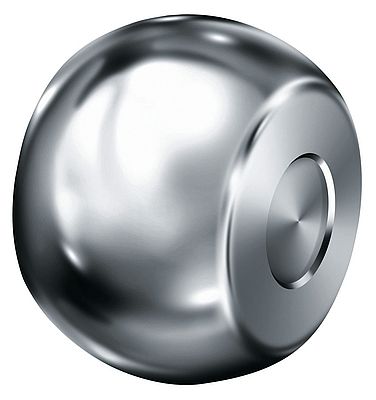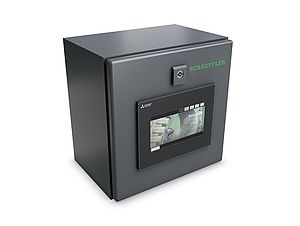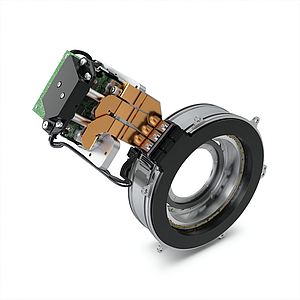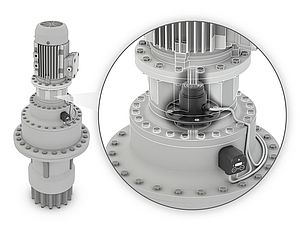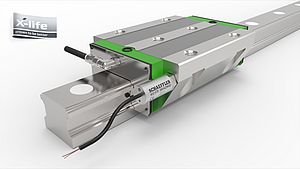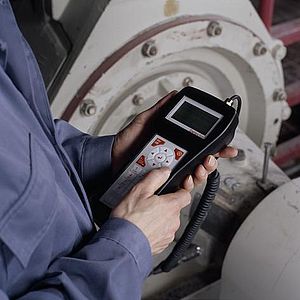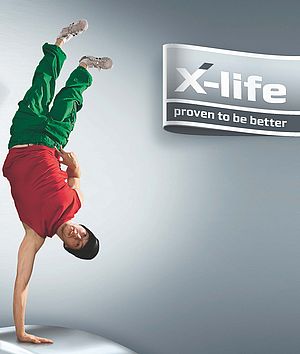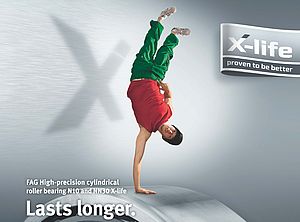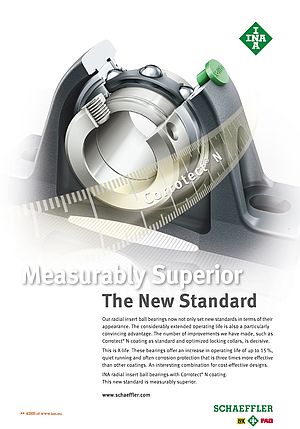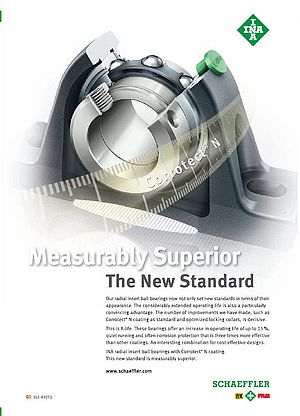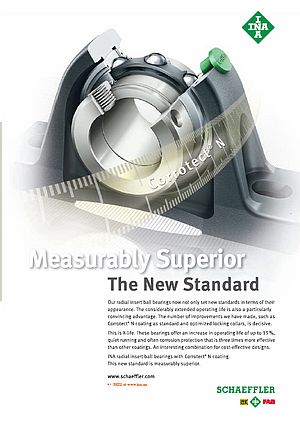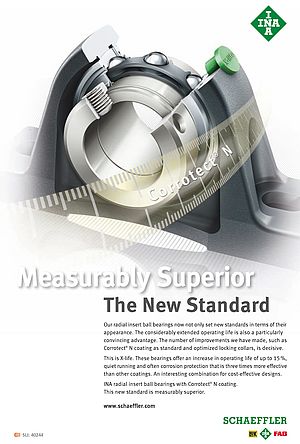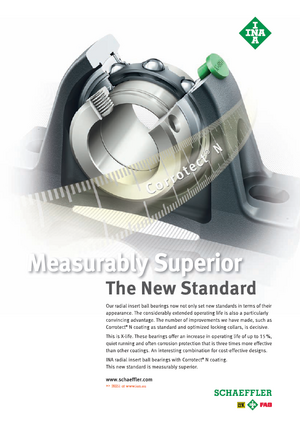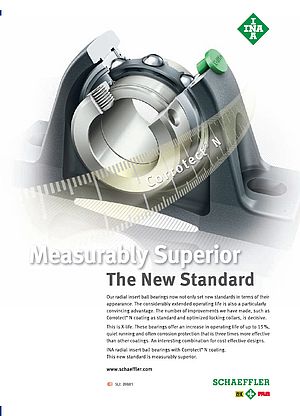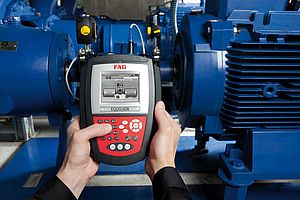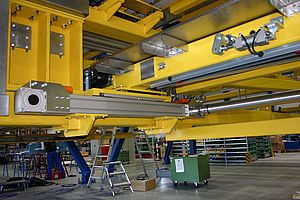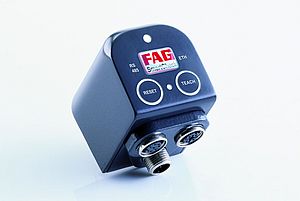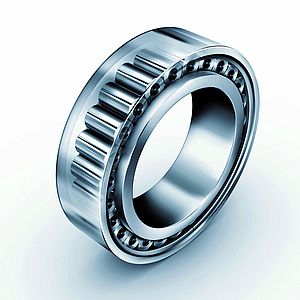Available with inside diameters from 580 up to 1030mm, the YRTC and ZKXDF series rotary table bearings from Schaeffler are suitable for multi-axis simultaneous machining applications. They offer reduced friction, increased rigidity and operating speeds, as well as more compact designs.
Based on a combination of the company’s YRT and RTC series of rotary table bearings, the YRTC range provides the basis for highly dynamic rotary axes for rapid positioning and for form milling using multi-axis simultaneous machining. Operation at continuous speeds, for example, in intermittent turning, is also possible within the operating limits. Compared to traditional combination thrust and radial cylindrical roller bearings, power dissipation is also significantly reduced. As a result of this marked reduction in friction, a significantly increased proportion of the drive torque supplied by the machine tool drive is freed up for axis acceleration – which increases machine productivity. The amount of heat introduced to the machine tool also reduces with less friction, resulting in a reduction in temperature-induced changes in the geometry of the machine, which therefore increases machining accuracy. For cooled machining axes, this means the cooling capacity can be decreased in line with the bearing’s reduced power dissipation, which in turn reduces machine tool operating costs. Due to these larger-size bearings, the savings can quickly reach values in the low kilowatt range. By using YRTC bearings with reduced friction, the control properties of the rotary axis improve, resulting in more precise geometry transitions when machining shapes and contours.
The company has also developed a completely new design of rotary table bearing based on the its innovative Ball Roller design concept. This innovation is based on a double row angular contact, thrust ball roller bearing in an ‘O’ arrangement that uses new assembly methods and a unique rolling element. For the Ball Rollers, all parts of a conventional ball that are not under load are removed. This means that around 15% of the ball diameter is cut away from both sides. The result is a ball that is flattened on both sides and which is approximately 30% narrower (and therefore lighter) than a conventional fully spherical alternative. Ball roller elements offer all the axial load handling capabilities of fully spherical balls, but allow overall bearing width and mass to be decreased by 15 to 20%, as well as reducing friction. This not only saves valuable design space, but means that the ‘slim’ shape of the ball roller, in combination with new assembly methods, enables the number of rolling elements to be increased. This in turn enables the filling capacity of the bearing to be increased by up to 90%. Using more rolling elements in the same design space results in higher load ratings and longer service life, providing opportunities to downsize products and assemblies. Known as the ZKXDF series, the new bearings enable the design of more compact, higher performance rotary table supports in the high speed range. The benefits to machine tool manufacturers include increased rigidity and accuracy, simplified assembly processes and options for reducing system or machine build costs. Due to the single piece bearing rings, the running accuracy of the rolling bearings can be more easily transferred to the machine sub-assembly. The number of joints is also reduced, resulting in increased rigidity. Also, the new bearings do not require any holes to be incorporated in the raceways for inserting the rolling elements. This has a beneficial effect on the rating life and operational reliability of the bearings, particularly at high speeds. As a transport-securing mechanism for holding the split bearing rings together is no longer required, the rolling bearings are easier to install in the machine tool and assembly errors avoided. By using Ball Roller bearings, the ZKXDF bearings provide a larger grease reservoir, which increases operating life and allows longer relubrication intervals. Also, depending on the rigidity requirements of the application, the bearing rings do not have to be centered and supported by adjacent structures across the entire height of the bearing. Often centering on part of an adjacent component is sufficient or this process can be eliminated completely. The outer and inner rings are offset from each other to enable the bearings to be screw mounted onto flat surfaces.
For high speed precision rotary tables, the company’s product range also includes the YRTS and ZKLDF series. Typically, these are used in high performance machine tools for combined milling and turning in a single workpiece clamping operation. These bearings offer inside diameters up to 460mm.


